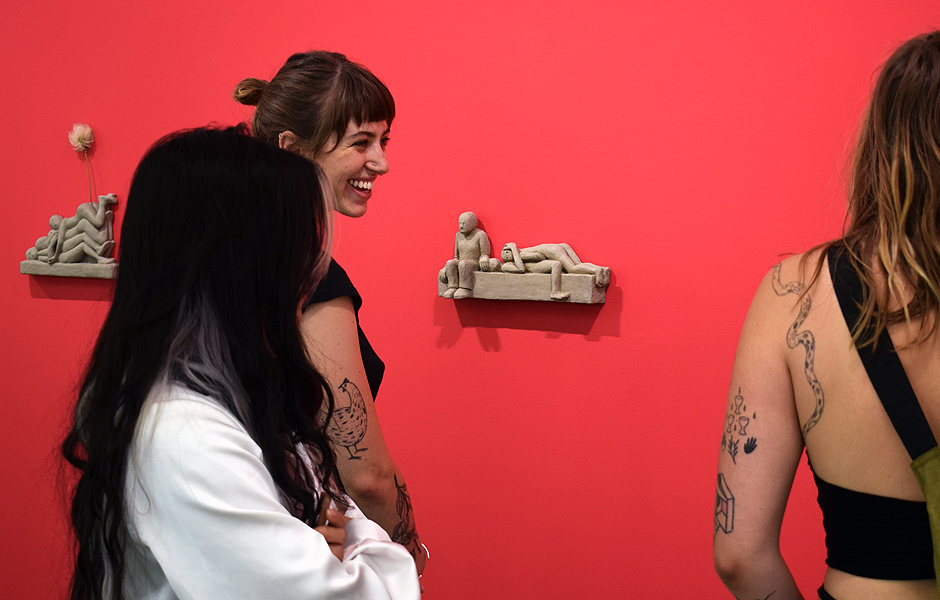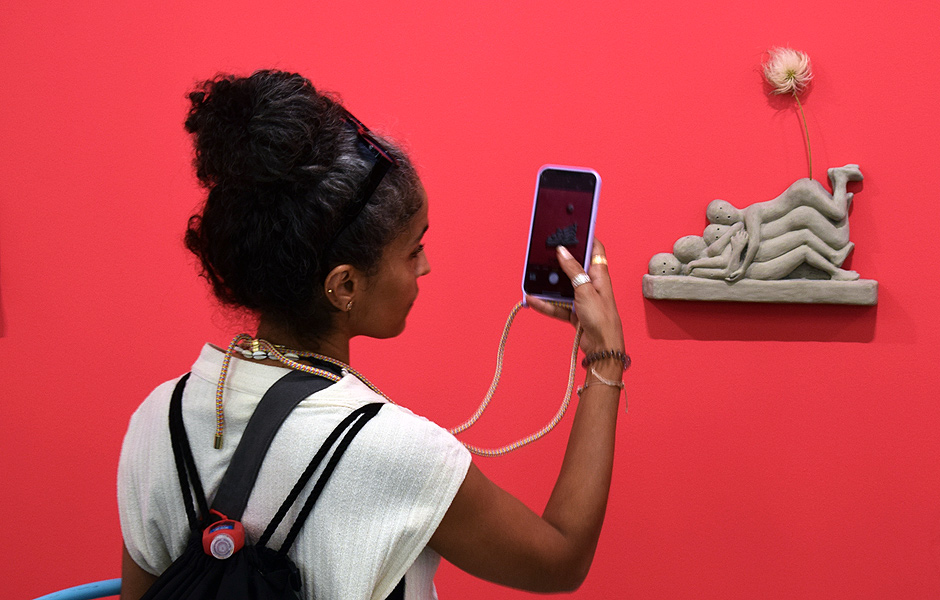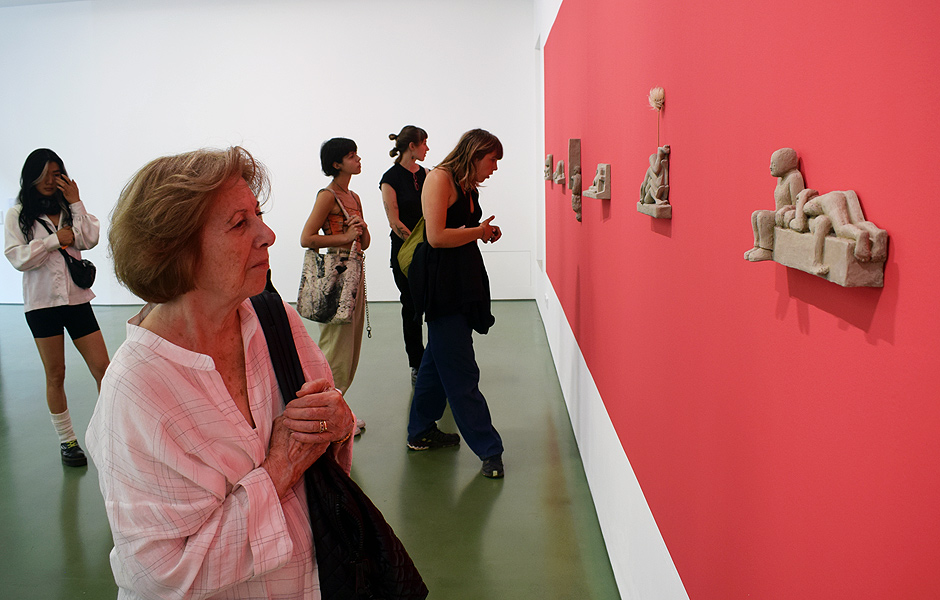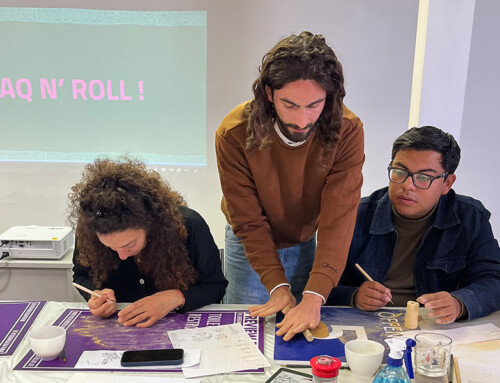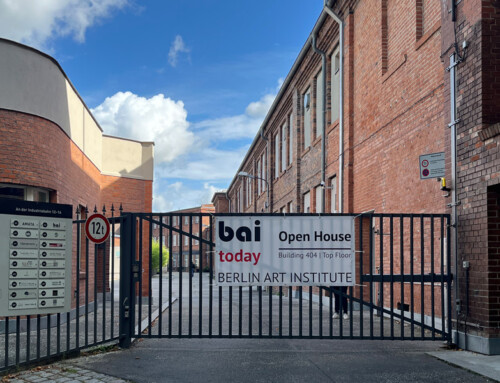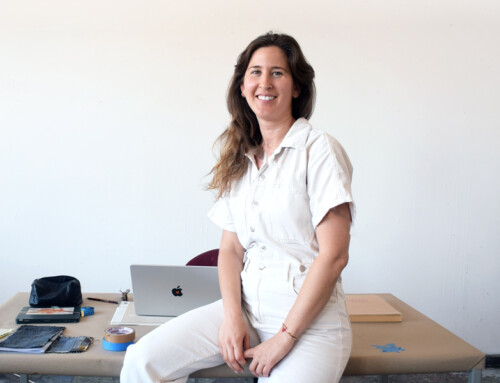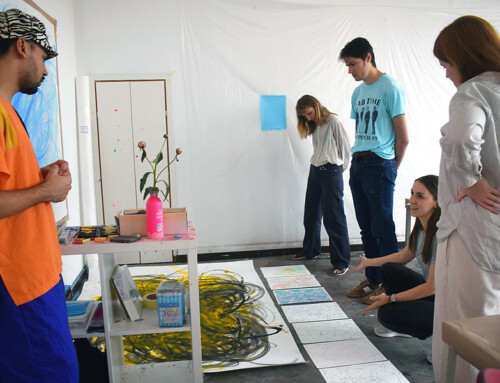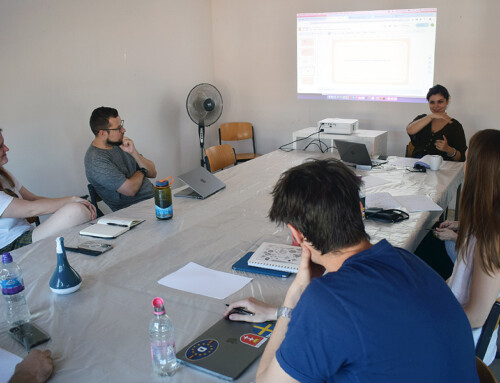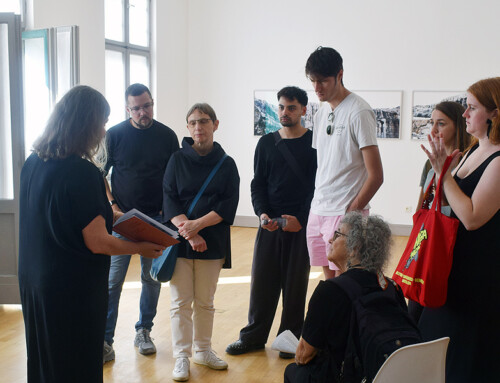July 13, 2022, 2 PM
Many thanks to the art historian & curator Viktor Neumann introducing our participants to the concept, program & history of the non-profit exhibition space Between Bridges and guiding us through the exhibitions THESES ON HOPE #2 Pas de ciel by Teo Hernandez & #3 Horizontales Paradies – Reliefserie by Sabian Baumann. The visit is part of the BAI Studio Program | Berlin Artist Residency, Art School, Arts Incubator, and Live Online Courses & Classes.
Exhibition Dates: July 09 –August 24, 2022 & July 09 –August 13, 2022
Location: Between Bridges
Opening Hours: Wednesday – Saturday, 12 Noon – 6 PM
Address: Adalbertstraße 43, 10179 Berlin
“Between Bridges is delighted to inaugurate one of its new spaces with an installation of the film Pas de ciel (1987), by the artist, writer and filmmaker Teo Hernandez. Pas de ciel constitutes the apotheosis of Hernandez’s lifelong practice, which was committed to capturing the movement of bodies and mediating the sensation of touch through film.
Born in 1939 in Ciudad Hidalgo, Mexico, Hernandez originally trained as an architect, only to then dedicate his life to the moving image and its ability to convey corporeality. In Mexico City, he co-founded the Centro Experimental de Cinematografía, before moving to Paris in 1966, where he became closely affiliated with the Ecole du corps, a Super8 film movement that studied the grammar of bodies in order to emulate how they moved. Together with his first muse and life partner, the artist Michel Nedjar, Hernandez travelled extensively through countries including Greece, India, Morocco and Nepal, making numerous short films that established his elaborate style, at once diaristic and baroque. Merging travelogue with the documentation and celebration of monotonous free time, his work provided both highly stylized, staged scenes in costume, and an enquiry into the aesthetic traditions of spirituality. From the mid-1970s, Hernandez expanded his oeuvre to feature-length films. These longer works frequently reimagined biblical stories, as in his reinterpretation of Oscar Wilde’s Salomé (1976) or the quadrilogy Le Corps de la Passion (1977–80), which featured his second muse and lover, the artist Gaël Badaud, as a recurring protagonist. Together with Nedjar, Badaud and the filmmaker Jakobois, the four soon became intimately connected as the collective Métro-Barbès-Rochechou-Art, exerting a mutual influence on each other’s approach to the relationship between body and camera. As a consequence, Hernandez transformed his filmic grammar in the 1980s, shifting from capturing moving bodies to using the camera as an extension of his own body in motion. In doing so he developed an ecstatically expressive new vocabulary involving a swinging camera, circular downward rotations when transitioning between shots, and the extensive use of whip zooms.
In his final years, Hernandez took a great interest in the filming of dance as much as filming as dance, undergoing a transformation that made him at once filmmaker, choreographer and performer. Pas de ciel, by contrast, is considered a paragon of collaboration. Created for the Rencontre Danse/Image festival in Chateauvallon, Hernandez conceived the piece with the dancer–choreographer Bernardo Montet, at that time an emerging figure in French contemporary dance, who merged elements of psychomotricity and butō with a repertoire informed by his personal experience of colonial heritage. Pas de ciel reimagines where film ends and dance begins: its language is silent and yet intensely resonant, its ‘syntax’ is straightforward – a body set against the horizon, between sea and sky – and it offers both a premonitory glimpse and the residual trace of the potentiality of movement and gesture.
As part of the opening programme for its new venue, Between Bridges is proud to present Zurich-based Sabian Baumann’s first solo exhibition in Berlin.
Born in Zug in 1962, for more than three decades Baumann has established a practice that counters the normative by celebrating the aesthetic and affective dimensions of indeterminacy and instability, rupture and contradiction, optimism and humour. Working predominantly in figurative drawing, the artist’s wide-ranging oeuvre encompasses sculpture, video and installation, as well as socially engaged and queer activist collaborations. Within and beyond Switzerland, Baumann has been a key figure in the queer–feminist and anti-discriminatory movement since the 1990s, initiating and co-organizing queer art and film projects, interventions, workshops and performances. These include: the event series erotisch, aber indiskret, Feminismus – Kunst – Pornografie (1995); the production label Sexismus Productions (1999–2003); the think tank Casual (2003–04); the film documentary working on it (2008); the exhibition project An Unhappy Archive(2013–present) (both collaborations with Karin Michalski); and the artistic–activist intervention die grosse um_ordnung (2018).
At Between Bridges Baumann presents Reliefserie (Relief series, 2013–2014), an array of small-scale sculptures made of unfired clay whose porous materiality is imbued with the potential for transfiguration. The series presents human, fantastical and hybrid beings as both the embodiment and mould for queer affinities and intimacies – for othersubjectivities; for other possible ways of relating, longing, and belonging. Affectionate and intertwined, these beings are engaged in practices that unfold horizontally: loving, nurturing, recovering, or dreaming together. Here, a horizontal paradise becomes the last resort to subvert the demands of the productivity-driven neoliberal condition.
When mounted for institutional presentation, the series is installed against a radiant raspberry red backdrop: this aligns the sculptures, aesthetically and conceptually, with An Unhappy Archive, the collaborative exhibition project Baumann created with Karin Michalski. The Archive gathers visual and theoretical material that questions “happiness” as a social norm, referring to and collaborating with manifold thinkers affiliated with queer affect theory such as Sara Ahmed, Lauren Berlant and – during its first presentation in 2013, before his untimely death – José Esteban Muñoz.” (Text excerpts from the press release by courtesy of Between Bridges)
More information on the Between Bridges Website.
